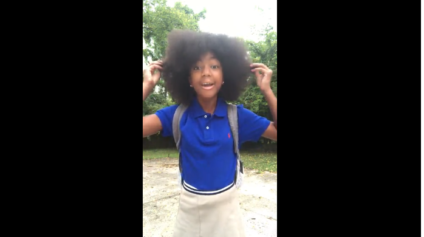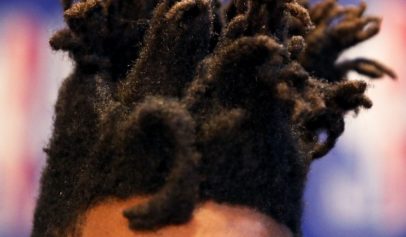A petition launched by a New York-based freelance writer is picking up steam as it calls for Black natural hair to be represented in emoji form.
Rhianna Jones teamed with designer Kerrilyn Gibson last month to make emoji featuring the unique stylings of afro-textured hair come to virtual life. In a letter attached to her Change.org petition, Jones explained her plans to send a letter to the Unicode Consortium, a nonprofit that oversees the creation and development of emoji, by the end of March.
“Emoji are a universal language of self expression,” the letter reads in part. “Afro-haired users like myself, however, don’t have any emoji that reflect our hair or cultural identities. Everybody should be able to see themselves in the digital conversations they’re having. Our hair and our stories matter.
“I am submitting an official Afro Hair Emoji proposal to Unicode March 31, 2019, for potential acceptance in their 2020 selection,” it continues. “Currently, emoji hair is straight and Eurocentric, and fails to represent the diversity of Black, Afro-Latinx and other Diasporic communities with kinkier, spherical, coily hair. Afro hair has been long neglected in universal beauty norms, which you see globally from actors and newscasters told their natural hair is unprofessional to children being sent home from school for natural hairstyles. We should feel celebratory of the cultural and historical richness of our roots, onscreen and IRL!”
The letter notes that the proposed emoji will include a range of skin tones, ages and genders.

The “afromoji” will include a range of skin tones and be inclusive of age and gender. (Design by Kerrilyn Gibson)
Even though the deadline has passed for Jones sending off the petition, signatures have still been coming in. By April 2 the afro emoji appeal had been signed more than 28,000 times.
“It’s a pretty lengthy process, so I hope that they’re listening and I hope that they know that we all really want this,” Jones told National Public Radio.
And the process isn’t easy to get through. The Unicode Consortium has a host of requirements for proposals, which includes not only the name and the image of the emoji but also licensing and information on how often it will be used. After a proposal is submitted by either March 31 for new emoji or September 1 for modified existing emoji (which is required for the emoji to be considered for the following year) an initial review of a new proposal can take up to 30 days.
Currently, there are more than 2,800 emoji, and 59 more are slated for inclusion in the Unicode Standard, a coding system designed to support the consistent representation of characters across the world’s writing systems. They include interracial couples, a wheelchair, garlic, and a yawning emoji.
Although Apple announced in 2018 that the new emoji in Unicode 11.0 include ones that represent people with curly hair, there are none that reflect the way hair naturally grows out of Black people’s heads.
“I think an Afro should be included because there’s an entire community of people — black, Afro-LatinX diasporic … the Jewfro — there’s just a lot of people that have hair that grows upward and spherically and defies gravity,” Jones said to NPR. She was inspired to create the emoji after celebrating Black History Month when she got fed up writing “insert Afro emoji here” in emails.
“There’s been a big dearth and lack of representation of natural hair and Afro hair in the media,” she continued. “I think the lack of Afro hair in our keyboards is a subtle but constant reminder of that.”


